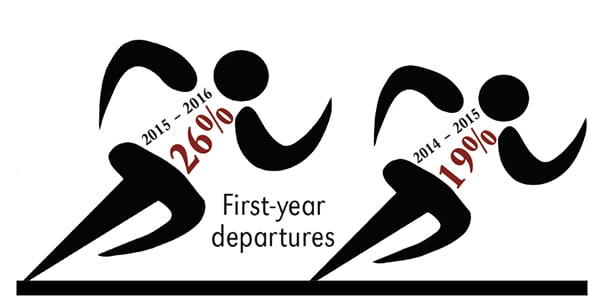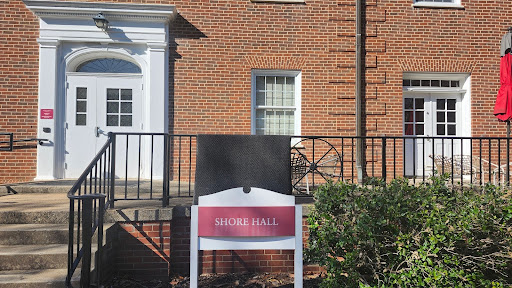Every year, Guilford College brings in new students from many different backgrounds. However, getting people to enroll at the school seems like the easy part when put against keeping them here.
During the last school year, the College lost 94 first-year students from the fall and spring semester. So far this year, the number has jumped to 124 first-year students who chose to leave.
For various reasons, even after only one semester, some first-year students find themselves transferring because they feel Guilford is not the place for them. Former first-year Dwain Norcott expressed how the rigor and meticulousness of courses prevented him from returning.
“The reason why I left Guilford was that I wasn’t prepared coming out of high school to attend a writing intensive school,” Norcott said.
To combat the difficult transition between high school and college, the College has aimed to facilitate the academic process for students by making the Learning Commons available to all. The Student Success Program, which provides one-on-one mentoring, as well as peer tutors, is available to students, too. The school also uses an early alert system which allows faculty to report students having academic difficulties in order to provide them with support.
“We are bringing up a new retention software that is being piloted this spring and should be fully functional by fall,” said Interim Director of First Year Experience Barb Boyette in an email interview. “This will streamline the early alert system, involve people around campus who have a relationship with the student of concern and allow us to analyze data in ways we never have before. This information will hopefully help us to hone our retention efforts even more.”
Aside from academics, fitting in and finding their ways at the College is another challenge that steers many first-year students away from Guilford. Andrew Young, a volunteer training coordinator at The Bonner Center, highlights that it is the obligation of the student to take initiative in their experience at the school.
“Students who are doing extraordinary work are of interest to others in the great world beyond,” said Young in an email interview. “Most have the capacity to be more engaged and create more opportunities for themselves but don’t. This is a hard demand on students very new to the campus, and so it would be no surprise if some left because they couldn’t find support.”
Young also emphasized the importance of projects that encourage faculty to embrace new methods and approaches in order to make the learning experience important and exciting, and he believes it is up to the student to take advantage of these opportunities.
“We expect everyone to find their way their own way,” said Young in an email interview. “That’s a great philosophy except it means students have to stick around long enough for that to happen. Every week there are dozens of events that take place on and off campus, but only tiny numbers of students know how to choose or maximize the benefit of these experiences.”
In addition, Boyette explained how the FYE 100 course operates in order to help students understand the resources that are available to them and to provide advisors to facilitate students’ transition to Guilford.
“The FYE program is about connections with faculty, staff and students who care about the first-year students and who try to help in the transition to college,” said Boyette.
While there is no one specific answer to keep students enrolled at Guilford, the College has taken several steps in providing ways to make students feel important.
“Retention is more than just keeping students from leaving,” said Young. “It’s about everyone on campus believing there are powerful, interesting, exciting and engaging reasons for staying.”













